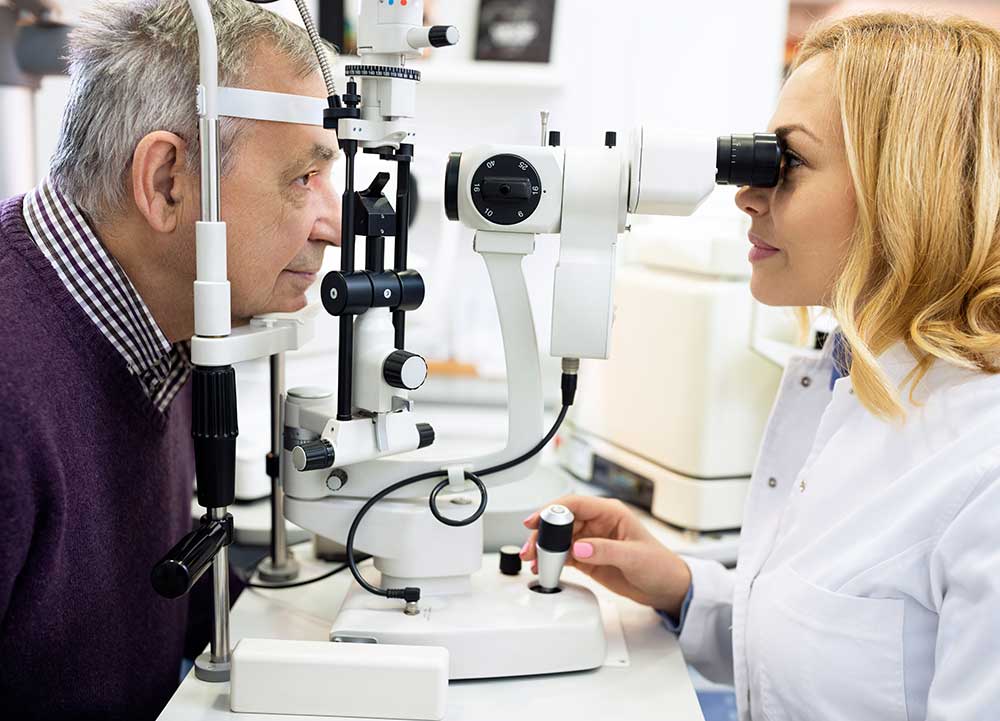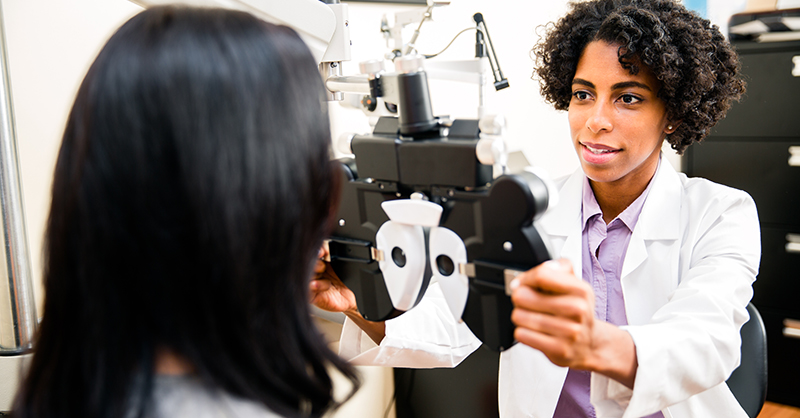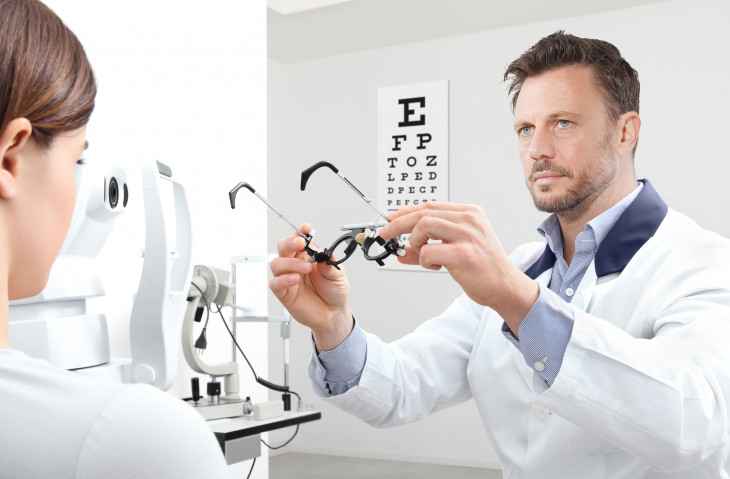Just How an Eye Doctor Can Help Avoid Vision Problems in Chino
Just How an Eye Doctor Can Help Avoid Vision Problems in Chino
Blog Article
Discovering the most recent Technological Innovations in Optometry and What They Mean for Eye Doctors
From the precision of Optical Coherence Tomography to the nuanced understandings supplied by AI-driven analysis tools, these innovations are setting brand-new standards in person assessment and therapy. As these improvements permeate the practice, optometrists are faced with the difficulty of welcoming these devices to improve client results.
Technologies in Diagnostic Equipment
Advancing the field of optometry, developments in analysis devices have reinvented the means eye care specialists analyze and diagnose aesthetic problems and ocular problems. The past decade has actually experienced substantial technical developments, making it possible for even more exact and detailed evaluations.
Another secret development is the introduction of sophisticated corneal topography systems, which map the surface curvature of the cornea with precision. These tools are particularly advantageous for suitable get in touch with lenses and detecting corneal conditions. Moreover, electronic retinal imaging has transformed traditional ophthalmoscopy, supplying detailed, panoramic sights of the retina that help with comprehensive aesthetic examinations.
The growth of wavefront aberrometry has also been crucial, enabling the analysis of refractive errors with unparalleled precision (Opticore Optometry). This technology assists in tailoring restorative lenses and boosting surgical outcomes for refractive surgical procedures. Collectively, these diagnostic developments equip eye doctors to provide superior client treatment, making certain early intervention and customized treatment techniques, eventually enhancing visual health and wellness end results
AI in Individual Monitoring
Structure on the structure of cutting-edge diagnostic devices, the incorporation of expert system (AI) in person management stands for a transformative leap for optometry. AI systems are progressively employed to enhance effectiveness, accuracy, and personalization in person care. By analyzing vast quantities of data, AI can identify patterns and forecast prospective ocular problems, making it possible for eye doctors to tailor interventions extra properly. This capability is important in handling chronic eye illness such as glaucoma and diabetic retinopathy, where very early detection and constant surveillance are vital.
Additionally, AI-driven platforms promote streamlined patient interactions and management processes. Automated organizing, online assessments, and individualized follow-up strategies not only enhance person fulfillment but additionally maximize time administration for experts. These systems can triage individuals based upon the urgency of their problems, making sure that those in important demand receive punctual interest.
Furthermore, AI enhances decision-making by supplying eye doctors with evidence-based referrals and treatment paths. By incorporating information from digital health documents, AI tools use insights that inform medical decisions, decreasing the risk of errors and enhancing patient results. As AI remains to advance, its function in person administration will likely broaden, reshaping the landscape of optometric treatment.
Developments in Retinal Imaging
In the realm of optometry, retinal imaging has witnessed exceptional technical improvements that are improving diagnostic capabilities and client care. Innovations such as Optical Coherence Tomography (OCT) and fundus digital photography have revolutionized how optometrists analyze the retina and imagine. OCT, specifically, provides high-resolution, cross-sectional pictures of the retina, permitting the detailed exam of its layers. This capability is invaluable for very early discovery and management of conditions like glaucoma, diabetic person retinopathy, and age-related macular degeneration.
Boosted imaging modalities like OCT angiography are additional refining analysis accuracy. Eye Doctor Optometrist. Such innovations help with the identification of minute retinal modifications that can symbolize illness progression.
Additionally, improvements in fabricated knowledge are enhancing retinal imaging by making it possible for automated analysis of large datasets. These systems aid eye doctors in identifying patterns a measure of pathology, thereby improving diagnostic precision and performance. Collectively, these advancements are changing retinal imaging right into a cornerstone of contemporary eye care, boosting results and expanding restorative possibilities.
Teleoptometry's Expanding Function
Teleoptometry is progressively becoming an essential component of eye care, driven by improvements in digital communication and diagnostic tools. As optometry embraces electronic change, teleoptometry facilitates remote assessments, permitting optometrists to extend their solutions beyond traditional limits. This is especially valuable in underserved and rural areas where access to specialized eye treatment is usually restricted. By leveraging high-resolution video conferencing and progressed retinal imaging, optometrists can conduct detailed eye exams from afar, making certain timely diagnosis and treatment.
The assimilation of synthetic intelligence (AI) additional enhances teleoptometry, making it possible for the evaluation of aesthetic data and helping in the discovery of ocular conditions such as glaucoma and diabetic retinopathy. AI-powered algorithms can quickly interpret intricate imaging data, offering optometrists with valuable understandings that bolster medical decision-making.
In Visit Your URL addition, teleoptometry sustains connection of treatment through seamless combination with digital health and wellness documents (EHRs), enabling eye doctors to preserve extensive client histories. This makes sure that people get constant and personalized treatment even when talking to various specialists.
Regardless of these advantages, challenges stay, consisting of ensuring information safety and security and handling patient assumptions. Teleoptometry represents a considerable stride towards more accessible, reliable, and patient-centered eye care. As modern technology develops, its role is poised to increase better.

Future Fads in Eye Treatment
A myriad of innovative patterns is set to improve the future of eye treatment, driven by technological improvements and the evolving needs of clients. One considerable pattern is the integration of expert system (AI) in diagnostics, which guarantees to enhance the accuracy and performance of eye assessments. AI formulas can evaluate substantial amounts of information from retinal photos, possibly finding conditions like diabetic person retinopathy and glaucoma earlier than traditional methods.
Moreover, customized medication is obtaining grip in optometry, with genetic testing educating customized therapy plans. This method aims to optimize patient outcomes by customizing interventions to individual genetic accounts. Wearable innovation, such as smart contact lenses, is also imminent, using real-time monitoring of intraocular stress or glucose levels, thus providing constant understandings right into ocular and systemic health and wellness.
The fostering of augmented truth (AR) and online truth (VIRTUAL REALITY) in training and client education is one more arising trend. These technologies use immersive experiences that can boost understanding and abilities both for individuals and eye doctors. As these fads advance, eye doctors need to stay abreast of technical innovations to provide sophisticated care, making sure improved person outcomes and contentment in the dynamic landscape of eye care.
Conclusion

Jointly, these diagnostic innovations encourage eye doctors to supply premium client treatment, making certain very early treatment and customized therapy approaches, ultimately boosting visual wellness outcomes.

As these technologies continue to progress, eye doctors need to adjust and integrate them into technique, inevitably enhancing process performance and elevating the standard of eye care supplied to people.
Report this page